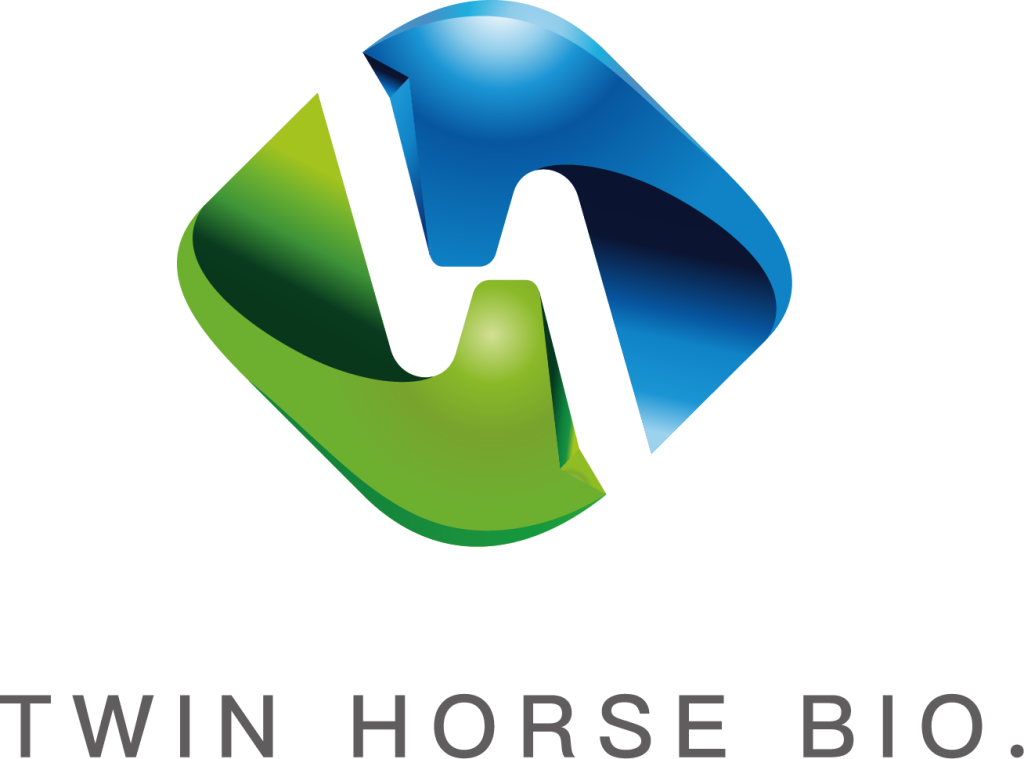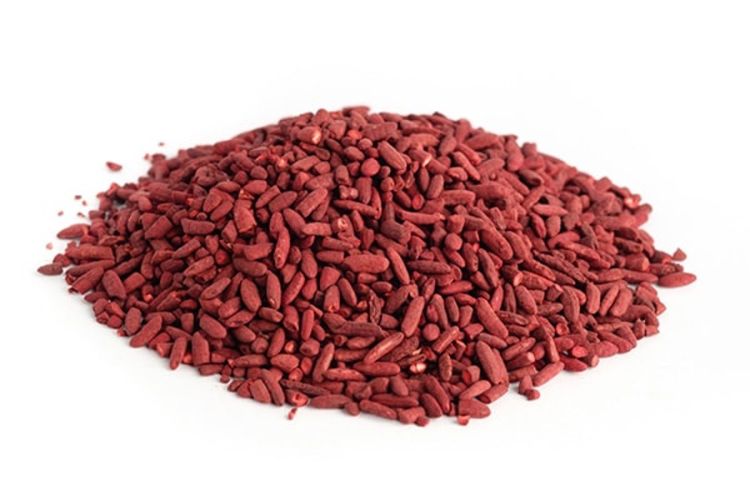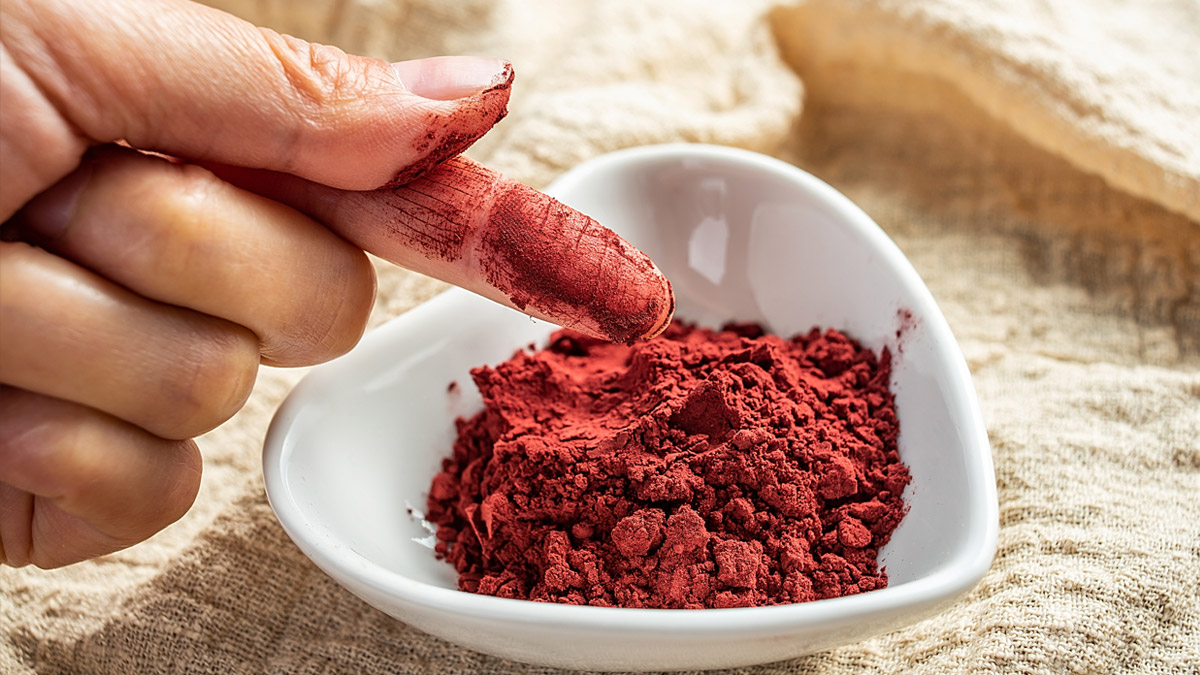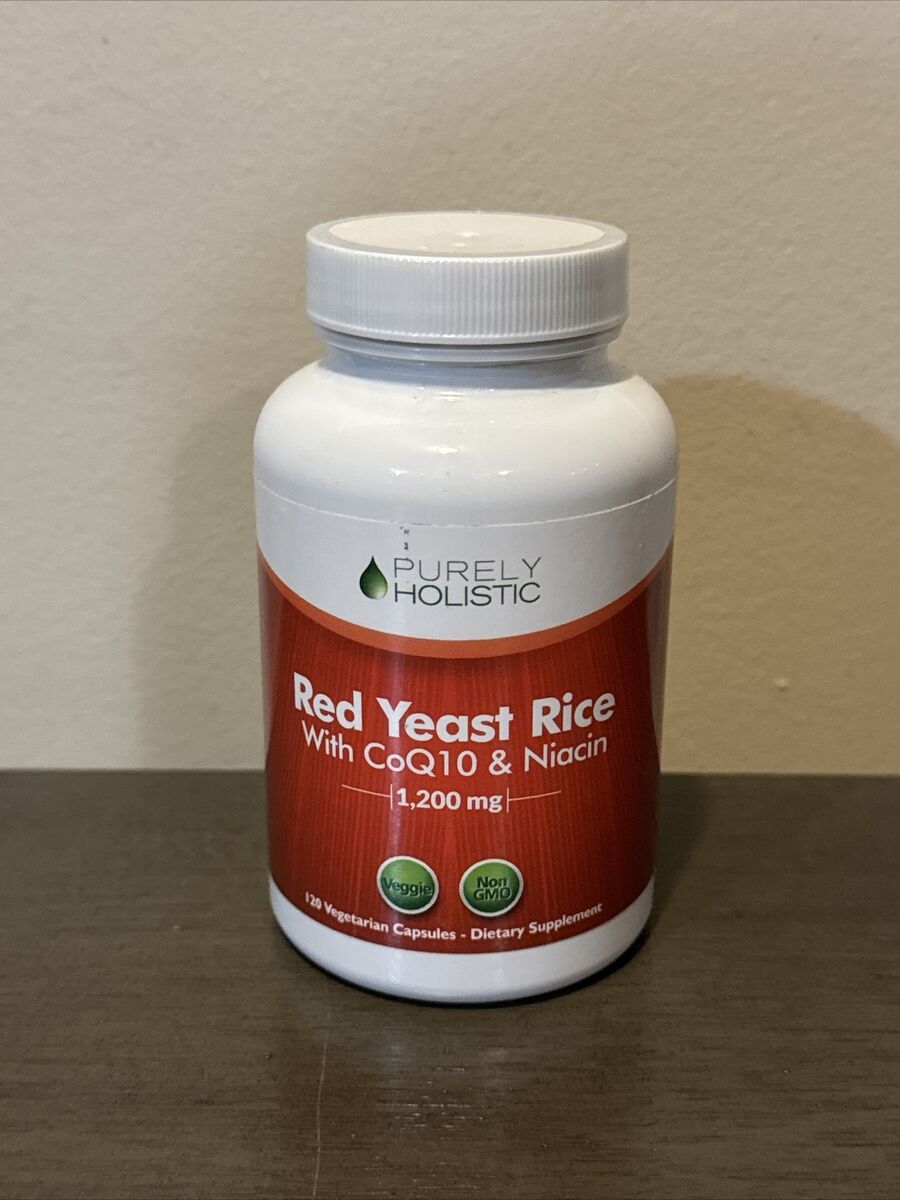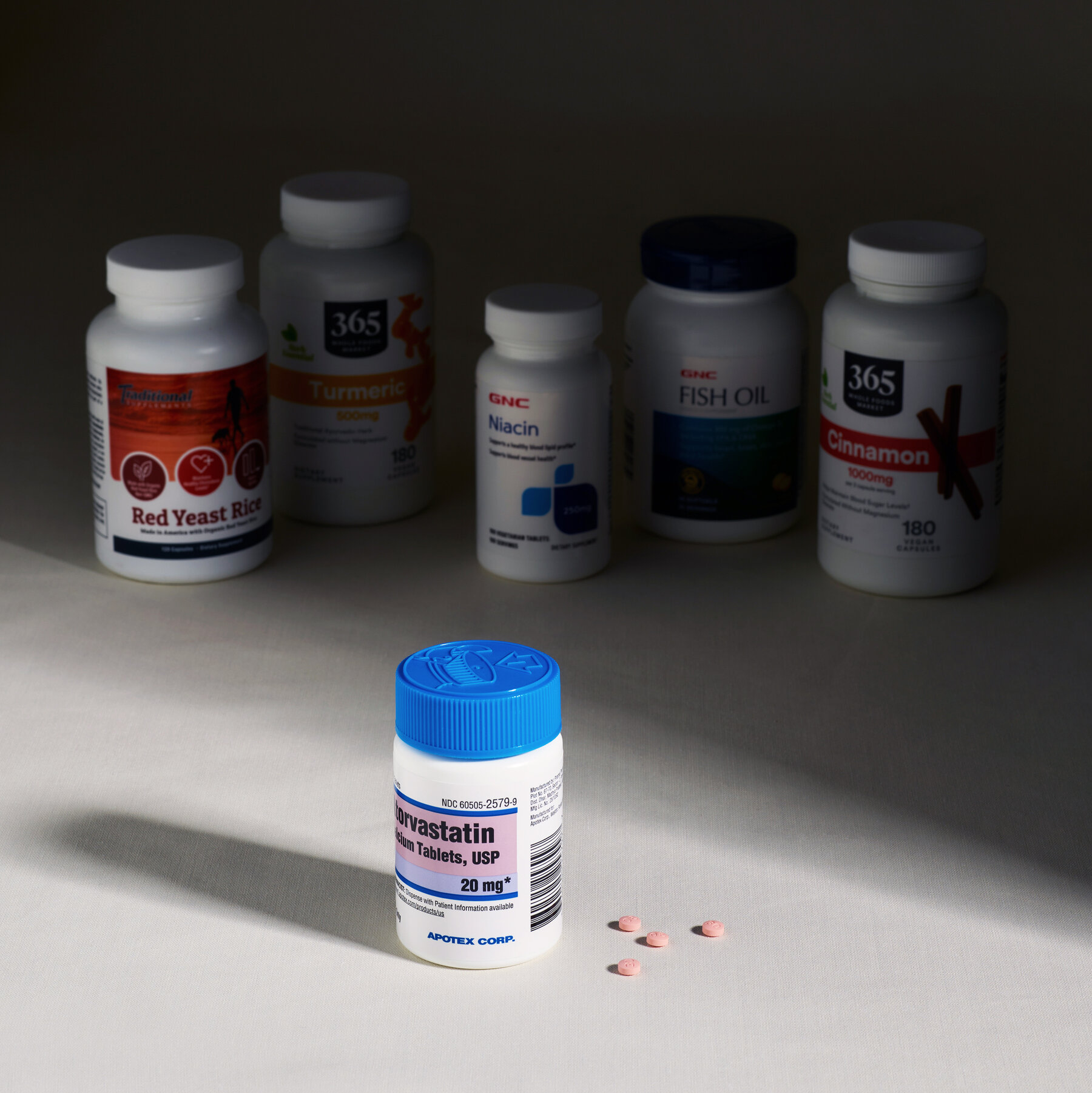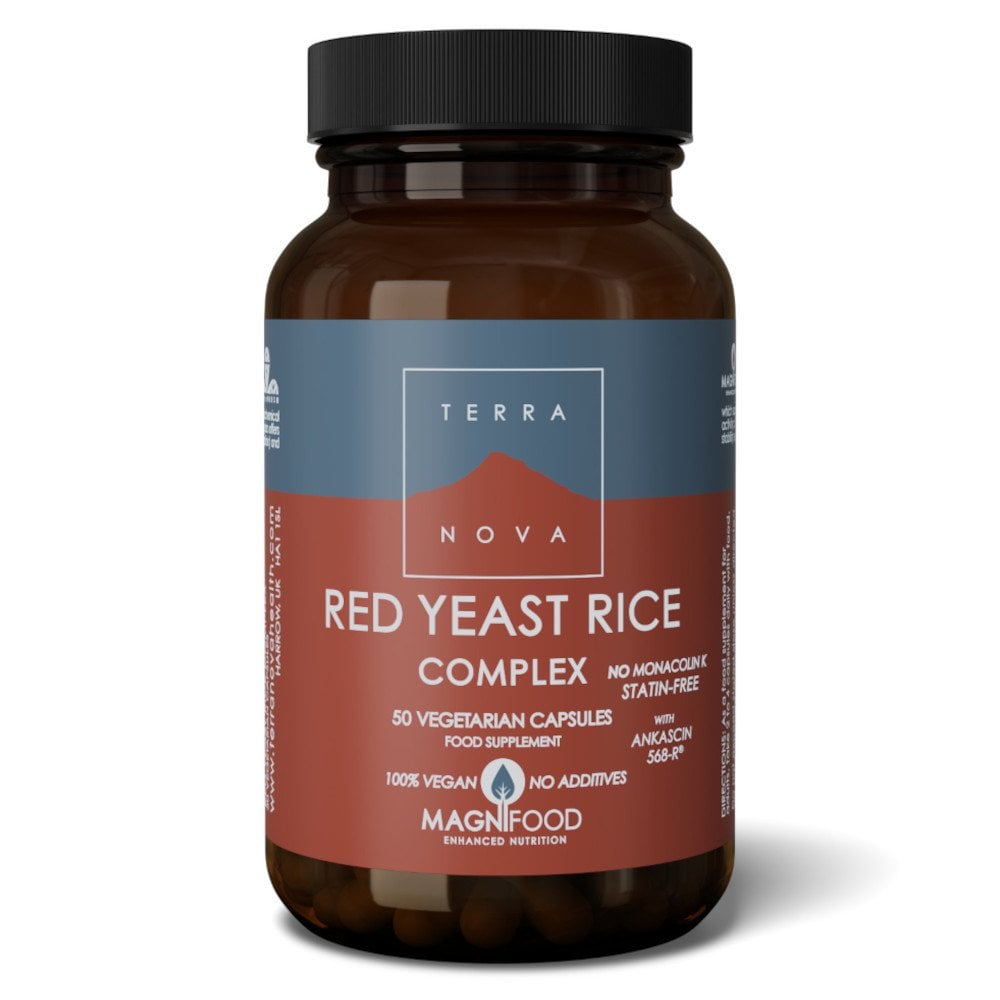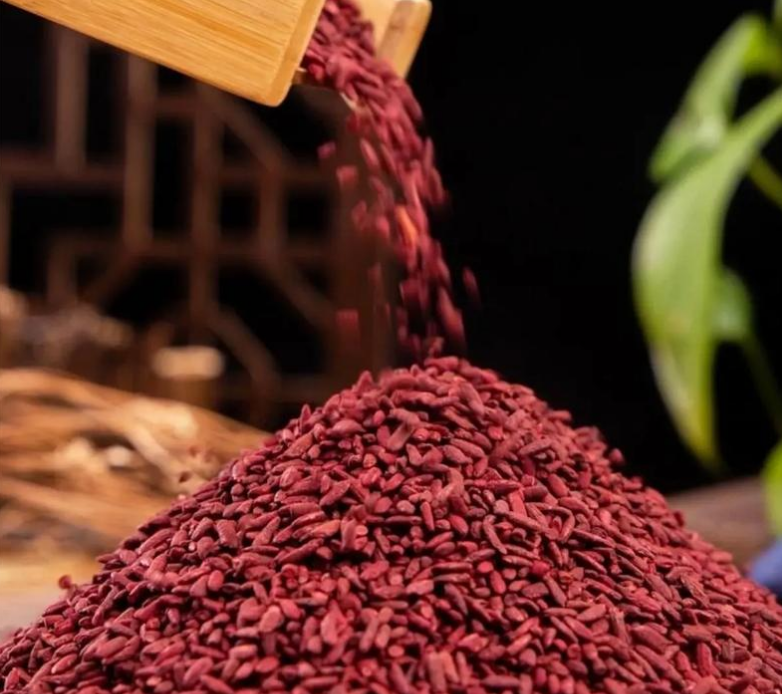Source
Red rice is derived from certain rice varieties, such as Oryza sativa, grown in countries including Bhutan, India, and Thailand. These producing countries together produce several millions of metric tons annually to supply the rising global demand. For instance, Bhutanese red rice, one of the popular varieties, is grown in the fertile Paro Valley, where more than 500,000 metric tons are produced every year. Anthocyanins are responsible for the distinctive color of red rice and also serve as antioxidants. One serving of 100 grams of red rice contains about 7 grams of protein, 3.5 grams of fiber, and about 2 milligrams of iron, while white rice contains less than 1 gram of fiber and negligible iron.
Red yeast rice is obtained by fermentation. The base is polished white rice to which Monascus purpureus yeast is added. Fermentation by this yeast produces bioactive compounds, one of which is monacolin K, a naturally occurring statin used for cholesterol reduction. Most red yeast rice is produced in countries such as China, whose production facilities can handle several thousand tons a year for the supplement industry. One kilogram of red yeast rice contains roughly 5–10 mg of monacolin K and thus is a potentially potent additive to cholesterol-lowering regimens. In contrast with red rice, this red yeast rice is not a staple food itself; rather, it undergoes further processing into powders and capsules that enter worldwide market distribution.
Thus, substantial discrepancies in cultivation scale and purpose exist between these two products. Red rice is usually grown on hilly or terraced regions and depends on sustainable cultivation methods that are labor-intensive. For instance, Thai red rice is grown in the northern highlands where annual rainfall exceeds 1,200 millimeters, ideal for this crop. On the other hand, red yeast rice production involves large-scale fermentation under strictly controlled temperature and humidity conditions to ensure homogeneity of the product. An average manufacturing plant processes as many as 20 metric tons per batch, sufficient to satisfy the yearly requirement of millions of supplement bottles on the global market.
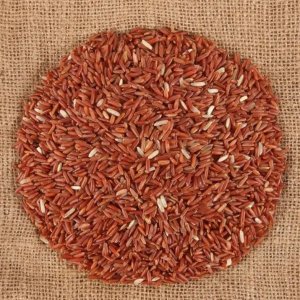
Nutritional Composition
Red rice is a whole grain that provides a good amount of important nutrients, especially fiber, vitamins, and minerals. In every 100 grams of uncooked red rice, it contains about 7 grams of protein, 3.5 grams of dietary fiber, and 5 milligrams of iron, hence being an excellent source of these nutrients. The anthocyanins in the red bran layer add to this antioxidant content, which helps fight the free radicals in the body. In contrast, white rice contains only 2 grams of protein, less than 1 gram of fiber, and negligible amounts of iron, making red rice a much healthier option. Magnesium levels are also significantly higher in red rice, containing about 110 milligrams per 100 grams, which supports muscle and nerve function.
Red yeast rice has different nutritional components because of the fermentation involved in its processing. A standard 600-mg red yeast rice capsule has about 2.4 mg of monacolin K, an active substance responsible for cholesterol control. It also contains unsaturated fatty acids, isoflavones, and sterols in trace amounts, which help in the maintenance of heart health. Red yeast rice is devoid of high fiber, protein, and mineral content since it is mainly used as a supplement rather than a staple food. While red rice can support digestion and overall nutrition, red yeast rice is intended more for cardiovascular benefits, with a particular effect of reducing LDL cholesterol levels.
As to the calorific value, red rice is low in calories, at around 110 calories in 100 grams of cooked rice, which makes it quite good for weight management and keeping vital nutrition in the body. The same amount contains a macronutrient balanced profile, containing roughly 80% carbohydrates, 10% protein, and 10% fat. In contrast, red yeast rice is taken in very small doses, where a common dose of 1,200 milligrams per day would contribute almost negligible calories. Its value mostly comes from the active compounds and not from the macronutrients it contains; hence, it is not really suitable for general dietary purposes but effective for managing cholesterol.
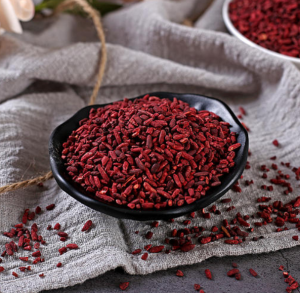
Primary Uses
Red rice is mainly used as a staple food and is very valued for nutritional and gastronomic purposes. It finds its place in health diets because of the high contents of fiber and minerals. Examples include Thailand and Bhutan, where it is mainly served as a base with vegetables, meats, or curries. A serving of 150 grams of cooked red rice contains about 165 calories, 5 grams of protein, and 2.5 grams of fiber in a regular meal. The low glycemic index, at about 55, makes it ideal for people with diabetes or fluctuations in blood sugar levels. Red rice is used in salads and soups, and is served on rice bowls that add a nutty flavor with its chewy texture to the generally appealing dish.
On the other hand, red yeast rice is mainly consumed as a dietary supplement for maintaining cholesterol levels and enhancing cardiovascular health. It is usually consumed in capsule or powdered form, and the recommended dosage is 600 to 1,200 milligrams per day. Research has established that continuous consumption of red yeast rice lowers LDL cholesterol by up to 22% and total cholesterol by 15%. This makes it a natural alternative to pharmaceutical statins for people with mild to moderate hypercholesterolemia. It is also used in traditional Chinese medicine for improving blood circulation and aiding digestion, but its most significant application remains in cholesterol management.
In addition to its use in meals, red rice has a growing role in making health-focused food products. It is very common in multi-grain bread, breakfast cereals, and snack bars, which are promoted for their high fiber and antioxidant content. Over the past five years, global demand for red rice has increased in packaged health foods, with sales up 15% annually. Its use in plant-based diets has also expanded, as more consumers seek nutrient-dense alternatives to refined grains. A 100-gram portion of red rice contains about 1.8 milligrams of manganese, supporting bone health and metabolism, further solidifying its position in the health food market.
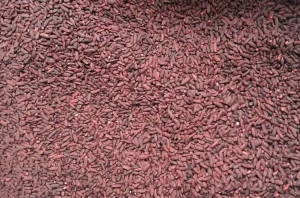
Health Benefits
Indeed, red rice has a high value of nutritional benefits, notably marked by its high fiber and antioxidant contents, as well as essential minerals. Cooked red rice contains about 3.5 grams of dietary fiber in every 100-gram serving, aiding digestion and helping reduce the chances of constipation. It helps in controlling blood sugar levels because of the presence of fiber; hence, it is an ideal choice for people with diabetes. Its antioxidants, including anthocyanins, contribute to reducing inflammation and oxidative stress, both linked to the causes of chronic diseases such as heart disease and cancer. Regular consumption of red rice-three servings or more per week-is said to potentially reduce the risk of developing cardiovascular conditions by as high as 20%.
Red yeast rice is highly valued for lowering cholesterol levels and keeping heart conditions at bay. The main active ingredient in it is monacolin K, which works just like prescription statins to depress the enzyme HMG-CoA reductase, a critical component in cholesterol production. In clinical trials, 1,200 milligrams a day of red yeast rice taken for eight weeks produced a 22% reduction in LDL cholesterol and a 15% reduction in total cholesterol. This natural cholesterol-lowering effect is especially great for people who cannot tolerate pharmaceutical statins. Beyond cholesterol-lowering, red yeast rice contains small components of unsaturated fatty acids and sterols, contributing to cardiovascular health.
Red rice is highly rich in magnesium; the content of about 110 mg in 100 g makes the mineral vital for normal function and excitability of muscles, nerves, blood pressure maintenance, and overall cardiovascular health. Intake of magnesium-rich foods, like red rice, has been inversely related to the risk of developing hypertension and stroke. In addition, red rice contains iron and zinc, minerals necessary for maintaining healthy blood flow and immunity. For instance, 150 grams of cooked red rice contributes about 10% of the day’s intake of iron and 15% of zinc to help with energy production and repair of tissues. These micronutrients will make the red rice a worthy one for balanced diets, especially for nutriment-deprived people.
Industrial Applications
The demand for red rice is also gaining industrial importance within the food and beverage sector, especially health-oriented items. High in fiber and antioxidants, red rice finds an important role in multi-grain snacks, breakfast cereals, and health bars. The global production of red rice is estimated to cross more than 1.2 million metric tons annually; about 25% of which is utilized by processed food. For instance, red rice flour is used in gluten-free baking mixes and in a $6.4 billion global gluten-free food market. Natural red pigments in red rice are also applied as a subtle coloring agent in beverages and desserts, particularly in those with clean-label and organic claims.
Red yeast rice has prominent applications in the pharmaceutical and nutraceutical fields in the form of dietary supplements to lower cholesterol. In 2023, the global market for red yeast rice supplements was valued at approximately $800 million, with an expected annual growth rate of 6.2%. Every batch of red yeast rice goes through rigorous quality control to contain standardized amounts of monacolin K, which generally ranges between 0.4% and 1.0%. The production facilities can process up to 20 metric tons per month, meeting the demand for millions of capsules sold worldwide. Red yeast rice supplements are particularly popular in regions with high rates of hypercholesterolemia, such as the United States and Europe, where nearly 30% of adults have elevated LDL cholesterol levels.
Red yeast rice is an excellent natural food colorant used in the food industry, mainly in Asian cuisine and traditional dishes. The pigments in it are heat-stable and nontoxic. Hence, it serves as an ideal coloring agent for foods such as red-cooked meats, fermented bean curds, and rice wines. More than 50,000 metric tons of red yeast rice is consumed annually in food production around the world. It is most used in the preparation of Chinese red rice wine, for which the pigment is needed to give it that deep red color. One batch of red yeast rice can be used to color as much as 10,000 liters of rice wine, an amount considered efficient for a natural additive.
Caloric and Glycemic Index
Being low in calories, red rice is a healthier alternative for people concerned with weight management or desiring a balance in energy intake. Cooked red rice contains about 110 calories per 100 grams of serving, which is relatively lower than the 130 calories contained in white rice. This difference in calorie intake, although minimal in one serving, could add up through time as one consumes the product. For instance, if red rice is used instead of white rice in daily meals, it could save as many as 7,300 calories a year, which is the equivalent of more than 2 pounds of body weight. Lower in calories and dense in nutrients, red rice has been an important constituent of health-oriented diets around the world.
The GI of red rice is also significantly lower compared to white rice, hence suitable for diabetic patients or those who want to control blood sugar levels. Where white rice has a GI of around 70, red rice has a GI of approximately 55; it therefore causes a much slower and more gradual increase in blood sugar levels, reducing the risk of insulin spikes. In studies involving persons with type 2 diabetes, the substitution of high-GI foods for red rice improved glycemic control, with an average FPG reduction of 10% over three months of intervention.
Red yeast rice is consumed in much smaller portions and certainly does not provide any calories per se as red rice itself does. A daily dose of 1,200 milligrams of red yeast rice contributes negligible calories—less than 1 calorie per dose—making its caloric impact virtually irrelevant. Its primary role lies in delivering bioactive compounds like monacolin K for cholesterol management. However, it lacks the carbohydrate content required to influence glycemic index measurements, so it is not classified or evaluated in terms of GI. It is used medicinally, rather than nutritionally, with specific health outcomes in mind, rather than to provide dietary energy or regulate blood sugar.
Market Availability
Red rice is a staple commodity in the global market, especially in countries where there is a high demand for whole grains and health-related products. The main exporters, such as India, Thailand, and Bhutan, produce collectively more than 1.5 million metric tons per year, of which Thailand alone produces nearly 800,000 metric tons. Red rice is usually sold in health food stores, supermarkets, and online platforms. The prices vary between $2 and $5 per kilogram, depending on the variety and region. Organic red rice, perceived to be of higher quality, is sold at a premium price of $6 to $8 per kilogram, targeting consumers in Europe and North America, where organic food sales have risen by 10% annually.
Red yeast rice is distributed mainly through pharmaceutical and supplement markets, rather than directly as a food item. Global production is concentrated in countries like China and Taiwan, where over 100,000 metric tons are manufactured annually to meet increasing global demand. Red yeast rice is considered a dietary supplement that has grown at a CAGR of 6.2%. The market of red yeast rice is concentrated in the United States, Europe, and the Asia-Pacific regions. Standard bottles of red yeast rice, in capsule form and offering 60 servings at 1,200 mg per serving, generally run anywhere from $15 to $30, depending on the brand and certification. This price indicates its value more as a medicine than as a food item.
The distribution channels are also much wider in the case of red rice because of the difference in application. Red rice is exported to more than 50 countries and is a staple in most traditional markets and modern retail outlets. As examples, consider that Indian red rice is used as a staple in all the Middle Eastern countries, for pilaf dishes; Bhutanese red rice is popular in specialty health stores in the US. Whereas red yeast rice sells primarily through pharmacies, health supplement stores, and online retailers specializing in nutraceutical products. Its availability is often regulated, as some countries classify it as a medicinal product due to its monacolin K content, limiting its market accessibility.
